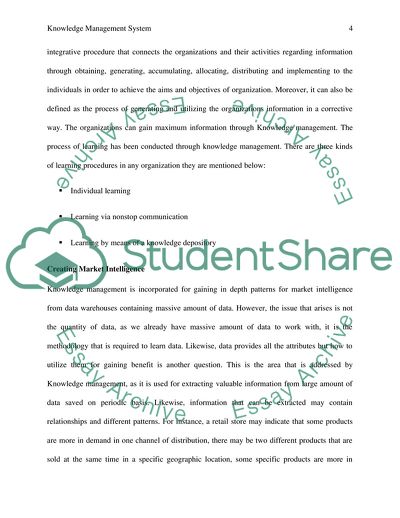Cite this document
(Knowledge Management Design and Implementation Research Paper Example | Topics and Well Written Essays - 2500 words, n.d.)
Knowledge Management Design and Implementation Research Paper Example | Topics and Well Written Essays - 2500 words. https://studentshare.org/information-technology/1845025-design-the-implementation-of-knowledge-management-system
Knowledge Management Design and Implementation Research Paper Example | Topics and Well Written Essays - 2500 words. https://studentshare.org/information-technology/1845025-design-the-implementation-of-knowledge-management-system
(Knowledge Management Design and Implementation Research Paper Example | Topics and Well Written Essays - 2500 Words)
Knowledge Management Design and Implementation Research Paper Example | Topics and Well Written Essays - 2500 Words. https://studentshare.org/information-technology/1845025-design-the-implementation-of-knowledge-management-system.
Knowledge Management Design and Implementation Research Paper Example | Topics and Well Written Essays - 2500 Words. https://studentshare.org/information-technology/1845025-design-the-implementation-of-knowledge-management-system.
“Knowledge Management Design and Implementation Research Paper Example | Topics and Well Written Essays - 2500 Words”. https://studentshare.org/information-technology/1845025-design-the-implementation-of-knowledge-management-system.


